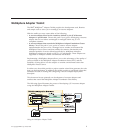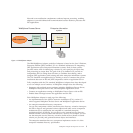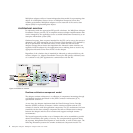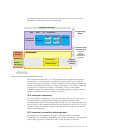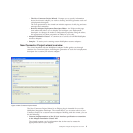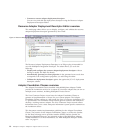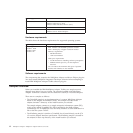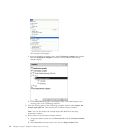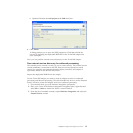
Version 1.1 of Enterprise Metadata Discovery includes enhancements for
configurable data handlers, function selectors, and data bindings, and a way to
build service descriptions using these configured artifacts and existing schemas. For
information on implementing interfaces for technology-style adapters, see
“Enterprise Metadata Discovery interfaces and implementation for technology
adapters” on page 157.
IBM WebSphere Adapter Toolkit overview
WebSphere Adapter Toolkit contains everything you need to create a resource
adapter. The adapters are metadata-driven components designed for bidirectional
communication with external services on Enterprise Information Systems (EIS),
such as transaction systems or ERP systems, as well as bidirectional
communication with technologies such as Email or Flat File.
Developing application components or processes that interact with the EIS through
an adapter requires tools that allow you to discover the services available on the
EIS. When the EIS does not include a metadata repository, the tool should allow
you to build the appropriate interactions with the EIS using adapters. The
enterprise metadata discovery (EMD) specification implemented by the WebSphere
Adapters enables you to discover services from an existing metadata repository or
build the appropriate interactions with an EIS. The specification defines the
interaction between adapters and tools and allows for plugging adapters into a
compatible tool implementation that supports the specification.
The enterprise metadata discovery-compliant tools are based on the Eclipse
platform and include IBM WebSphere Integration Developer and IBM Rational
Application Developer. The current tools support generation of SCA and J2EE
programming model artifacts, and is extensible to also support generation of
artifacts for other programming models and server runtimes. Enterprise metadata
discovery provides pluggability for artifact writers, which store the metadata and
configuration information in a manner compatible with the tools and runtime
requirements. The current enterprise metadata discovery implementation supports
SCA artifacts, but other artifacts can be generated by implementing a writer
plug-in. Such implementations may choose to write the configuration information
and metadata directly to their native repository, or to create classes or
configuration files to contain properties required for runtime.
In the service discovery mode, you use the adapter to connect to the EIS metadata
repository and browse its contents. You can select objects or services required by
the business application from the repository, specify properties for the objects and
import them (as business objects) into the development environment.
The enterprise metadata discovery process defines an abstract representation of the
imported services that allows the external service wizard to generate artifacts that
are specific to the programming model and the supported server runtime.
If you need to build a service (rather than discover a service), you can use the
external service wizard to create services from existing artifacts in the context of
the particular adapter to be used at run time. You can select the existing data types
to be exchanged and defined the transformation to be performed on these data
types.
The toolkit includes the following:
v An adapter development wizard and editor - Both are Eclipse plug-ins targeted
for use with WebSphere Integration Developer, v. 6.2:
8 WebSphere Adapters: WebSphere Adapter Toolkit User Guide




